-
 Bitcoin
Bitcoin $85,134.1423
0.86% -
 Ethereum
Ethereum $1,882.9872
0.08% -
 Tether USDt
Tether USDt $0.9999
-0.01% -
 XRP
XRP $2.1267
-2.21% -
 BNB
BNB $602.6119
-2.07% -
 Solana
Solana $126.3155
-1.94% -
 USDC
USDC $1.0000
-0.01% -
 Dogecoin
Dogecoin $0.1732
0.20% -
 Cardano
Cardano $0.6830
0.34% -
 TRON
TRON $0.2389
2.17% -
 Toncoin
Toncoin $4.0609
-1.54% -
 Chainlink
Chainlink $13.6750
-2.45% -
 UNUS SED LEO
UNUS SED LEO $9.3981
2.01% -
 Stellar
Stellar $0.2681
-2.14% -
 Sui
Sui $2.4875
2.30% -
 Avalanche
Avalanche $19.4840
-0.66% -
 Shiba Inu
Shiba Inu $0.0...01242
-3.54% -
 Hedera
Hedera $0.1684
-1.60% -
 Polkadot
Polkadot $4.1148
-2.95% -
 Litecoin
Litecoin $83.0925
-2.19% -
 Bitcoin Cash
Bitcoin Cash $306.4919
-2.06% -
 MANTRA
MANTRA $6.2535
-0.54% -
 Bitget Token
Bitget Token $4.6025
-0.96% -
 Dai
Dai $1.0000
-0.01% -
 Ethena USDe
Ethena USDe $0.9999
0.02% -
 Pi
Pi $0.6766
-5.48% -
 Hyperliquid
Hyperliquid $13.5266
-2.56% -
 Monero
Monero $216.1067
-0.56% -
 Uniswap
Uniswap $6.1363
-0.96% -
 Aptos
Aptos $5.3208
-1.08%
How to extend the mining life by optimizing rx580's cooling solution?
Optimizing RX 580 cooling via passive (case airflow, undervolting, fan curves) and active (aftermarket coolers, liquid cooling) methods extends its mining lifespan. Consistent temperature monitoring below 70°C prevents premature failure.
Feb 28, 2025 at 07:54 pm
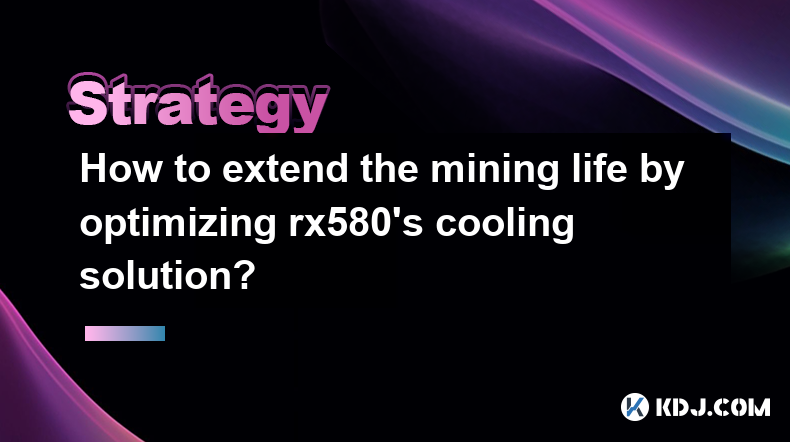
How to Extend the Mining Life by Optimizing RX 580's Cooling Solution?
Key Points:
- Understanding the RX 580's thermal limitations and their impact on lifespan.
- Implementing effective passive cooling strategies: case airflow optimization, undervolting, and fan curve adjustments.
- Utilizing active cooling enhancements: aftermarket coolers, liquid cooling solutions, and fan modifications.
- Monitoring temperature and performance metrics for proactive maintenance.
- Preventative measures to avoid premature hardware failure.
How to Extend the Mining Life by Optimizing RX 580's Cooling Solution?
The AMD Radeon RX 580, while a popular choice for cryptocurrency mining due to its relatively high hash rate and affordability, suffers from thermal limitations. Its lifespan, especially under the intense heat generated during continuous mining operations, is significantly affected by its cooling capabilities. Optimizing the RX 580's cooling solution is crucial for extending its operational life and maintaining consistent performance. This involves a multi-pronged approach encompassing both passive and active cooling strategies, meticulous monitoring, and preventative maintenance.
- Understanding the RX 580's Thermal Limitations and Their Impact on Lifespan:
The RX 580, like many graphics cards designed for gaming, wasn't engineered for the continuous, high-load operation demanded by cryptocurrency mining. The GPU and VRAM generate substantial heat during prolonged mining sessions, pushing the components to their thermal limits. Exceeding these limits leads to thermal throttling, where the card reduces its clock speeds to prevent overheating, resulting in a decrease in hash rate and mining efficiency. More critically, prolonged operation at high temperatures accelerates component degradation, leading to premature failure of the GPU, VRAM, or other critical components. This degradation manifests in various ways, including increased fan noise, instability, artifacts on the screen (if connected to a display), and ultimately, complete system failure. The lifespan of the card is directly correlated to the average temperature it experiences during operation. Keeping the temperature consistently below 70°C (158°F) is generally considered ideal for extending its lifespan, while temperatures exceeding 80°C (176°F) significantly increase the risk of damage. Understanding these thresholds is the first step towards optimizing the cooling solution. The manufacturer's specifications should be consulted for precise temperature limits, but general guidelines from the cryptocurrency mining community suggest maintaining temperatures as low as possible within safe operating ranges. Analyzing the specific model of RX 580 is also critical as different manufacturers may utilize different cooling solutions with varying levels of efficiency. The quality of the thermal paste applied during manufacturing also impacts heat transfer efficiency. Poorly applied thermal paste can lead to hotspots on the GPU die, significantly accelerating degradation.
- Implementing Effective Passive Cooling Strategies:
Passive cooling focuses on improving airflow and heat dissipation without adding active cooling components like additional fans or liquid coolers. Several strategies can significantly improve the RX 580's thermal profile:
* **Case Airflow Optimization:** The case in which the RX 580 is housed plays a vital role in passive cooling. Adequate airflow is essential to prevent heat buildup. Ensure the case has sufficient intake and exhaust fans strategically positioned to create a positive pressure environment, pulling cool air in and expelling hot air. Consider replacing standard case fans with higher CFM (Cubic Feet per Minute) fans for improved airflow. Avoid obstructing airflow pathways with cables or other components. Proper cable management is essential for maintaining optimal airflow within the case. The orientation of the graphics card within the case can also impact cooling. Positioning it vertically, if the case allows, can sometimes improve airflow around the card. The use of strategically placed fans can also direct cool air towards the graphics card and away from hot components.
* **Undervolting:** Reducing the voltage supplied to the RX 580 can significantly lower its power consumption and, consequently, its heat output. Undervolting can be achieved using software like MSI Afterburner or WattMan, allowing for fine-grained control over voltage and clock speeds. This process involves carefully reducing the voltage while monitoring for stability. While undervolting will slightly reduce the hash rate, the decrease in temperature and power consumption often outweighs this minor performance penalty in the long run, contributing to a longer lifespan. It's a delicate balance; too much undervolting can lead to instability, while insufficient undervolting won't significantly improve cooling. Finding the optimal undervolting settings requires careful experimentation and monitoring.
* **Fan Curve Adjustments:** The default fan curve on the RX 580 may not be optimal for mining. Adjusting the fan curve to ramp up the fan speed at lower temperatures can prevent the card from reaching excessively high temperatures. This proactive approach ensures that the fans are actively cooling the card before it reaches its thermal limits. Custom fan curves can be created using software like MSI Afterburner or WattMan. The goal is to balance fan noise with effective cooling. While running the fans at maximum speed will provide the best cooling, it will also generate significantly more noise. The ideal fan curve will maintain a balance between quiet operation and effective heat dissipation.
- Utilizing Active Cooling Enhancements:
Active cooling strategies involve adding external cooling components to improve heat dissipation.
* **Aftermarket Coolers:** Replacing the stock cooler on the RX 580 with a high-performance aftermarket cooler can significantly improve its thermal performance. Aftermarket coolers often feature larger heatsinks, more heat pipes, and higher-CFM fans, leading to better heat dissipation. When choosing an aftermarket cooler, it's crucial to ensure compatibility with the specific RX 580 model. The mounting mechanism and dimensions must be carefully checked to avoid any issues during installation. High-quality thermal paste should be used to ensure optimal heat transfer between the GPU and the cooler.
* **Liquid Cooling Solutions:** Liquid cooling provides a much more efficient method of heat dissipation compared to air cooling. A custom water cooling loop or an all-in-one (AIO) liquid cooler can significantly reduce the operating temperature of the RX 580. This method requires more technical expertise and is more expensive than air cooling solutions. However, the improvement in thermal performance can be substantial, especially for overclocked cards or in high-temperature environments. Proper installation and maintenance are crucial to prevent leaks and other potential issues.
* **Fan Modifications:** Adding additional fans to the case or directly mounting fans to the heatsink can improve airflow and cooling. However, it's essential to ensure proper airflow management to prevent creating dead zones or hot spots. Modifying the existing fan on the RX 580's cooler with a higher CFM fan can also improve cooling.
- Monitoring Temperature and Performance Metrics for Proactive Maintenance:
Continuous monitoring of the RX 580's temperature and performance is essential for proactive maintenance. Software like MSI Afterburner, HWMonitor, or similar tools can be used to track GPU temperature, fan speed, core clock speed, and memory clock speed. Regularly checking these metrics allows for early detection of any anomalies, such as unusually high temperatures or performance drops, enabling timely intervention to prevent further damage. Setting up alerts for critical temperature thresholds can provide immediate notification of potential problems. Regularly cleaning the dust from the heatsink and fans is also crucial for maintaining optimal cooling performance. Dust buildup acts as an insulator, hindering heat dissipation.
- Preventative Measures to Avoid Premature Hardware Failure:
Preventing premature hardware failure requires a holistic approach encompassing all aspects of the RX 580's operation. This includes:
* **Regular Cleaning:** Dust accumulation on the heatsink and fans significantly reduces cooling efficiency. Regular cleaning using compressed air is recommended to remove dust and debris.
* **Stable Power Supply:** Ensure the power supply unit (PSU) is sufficient to handle the power demands of the RX 580, especially when overclocked or using additional cooling components. An unstable power supply can lead to component failure.
* **Proper Ventilation:** Maintaining proper case ventilation is crucial for preventing heat buildup. Ensure sufficient intake and exhaust fans are installed and functioning correctly.
* **Monitoring Voltage and Current:** Regularly monitoring the voltage and current supplied to the RX 580 helps detect any anomalies that might indicate potential problems.
FAQs:
Q: What is the ideal operating temperature for an RX 580 during mining?
A: While the exact ideal temperature varies slightly depending on the specific RX 580 model and its cooling solution, aiming to keep the GPU temperature consistently below 70°C (158°F) is generally recommended for extended lifespan and optimal performance. Temperatures exceeding 80°C (176°F) significantly increase the risk of damage.
Q: How often should I clean my RX 580's cooler?
A: The frequency of cleaning depends on the environment. In dusty environments, cleaning every 2-3 months might be necessary. In cleaner environments, cleaning every 6 months might suffice. Visual inspection can help determine the need for cleaning.
Q: Can undervolting damage my RX 580?
A: Undervolting, if done improperly, can lead to instability and potential damage. It's crucial to proceed cautiously, gradually reducing voltage and monitoring for stability using stress tests. Starting with small voltage reductions and gradually increasing them while monitoring for errors is recommended.
Q: What are the signs of an overheating RX 580?
A: Signs of overheating include unusually high temperatures reported by monitoring software, increased fan noise, system instability (crashes, freezes), reduced hash rate, and visual artifacts on the screen (if connected to a display). In extreme cases, the card might even shut down completely.
Q: Is liquid cooling necessary for mining with an RX 580?
A: Liquid cooling is not strictly necessary, but it offers significant advantages in terms of thermal management, particularly in high-temperature environments or with overclocked cards. Effective air cooling can be sufficient, especially with optimization techniques as described above. The choice depends on budget, technical expertise, and desired level of cooling performance.
Disclaimer:info@kdj.com
The information provided is not trading advice. kdj.com does not assume any responsibility for any investments made based on the information provided in this article. Cryptocurrencies are highly volatile and it is highly recommended that you invest with caution after thorough research!
If you believe that the content used on this website infringes your copyright, please contact us immediately (info@kdj.com) and we will delete it promptly.
- Altcoins Nosedive Up to 50% On Binance, Sparking Confusion Among Investors
- 2025-04-02 18:35:12
- EOS Price Soars Nearly 20% as Vaulta Banking Initiative Boosts Investor Confidence
- 2025-04-02 18:35:12
- EOS (VAULT) Price Surges 20% as the Network Unveils Its Vaulta Banking Advisory Council
- 2025-04-02 18:30:12
- United States Senator Ted Cruz has introduced a new bill that offers tax incentives for cryptocurrency miners using flared natural gas to power mining operations.
- 2025-04-02 18:30:12
- Pi Network's Native Cryptocurrency, PI, Drops 74% From Its All-Time High
- 2025-04-02 18:25:12
- Pendle (PENDLE) Token Attracts Whales as 5 Newly Created Wallets Withdraw 2.66M Tokens From Binance
- 2025-04-02 18:25:12
Related knowledge
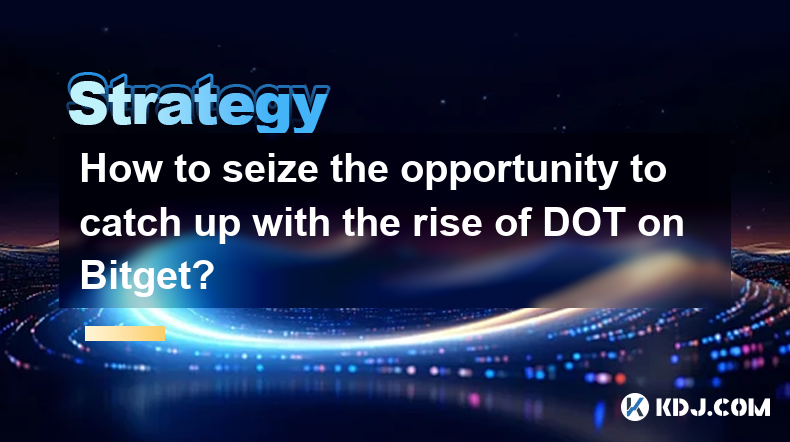
How to seize the opportunity to catch up with the rise of DOT on Bitget?
Mar 31,2025 at 07:29pm
Understanding the DOT/Bitget OpportunityPolkaDot (DOT) is a prominent cryptocurrency known for its innovative cross-chain interoperability solutions. Bitget is a well-established cryptocurrency exchange offering a variety of trading options, including DOT trading pairs. Seizing opportunities within this pairing requires understanding market dynamics, r...

How to optimize the buying and selling points when trading ALGO on Binance?
Mar 31,2025 at 12:28am
Understanding ALGO Price Volatility on BinanceAlgorand (ALGO) price, like most cryptocurrencies, is highly volatile. Successful trading requires understanding these fluctuations and identifying optimal entry and exit points. This involves analyzing market trends, using technical indicators, and managing risk effectively. Ignoring these factors can lead...
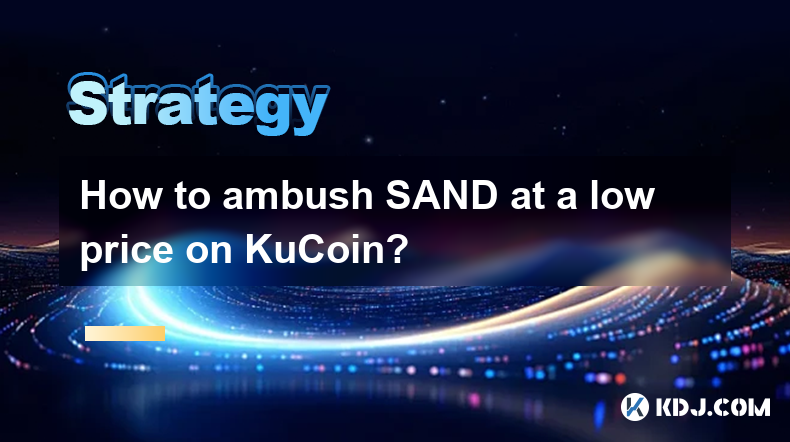
How to ambush SAND at a low price on KuCoin?
Apr 02,2025 at 06:22am
Understanding the SAND Price VolatilityThe Sandbox (SAND) token, like most cryptocurrencies, experiences price fluctuations. These fluctuations are influenced by various factors, including market sentiment, technological developments within the Sandbox metaverse, broader cryptocurrency market trends, and news impacting the overall blockchain space. Suc...
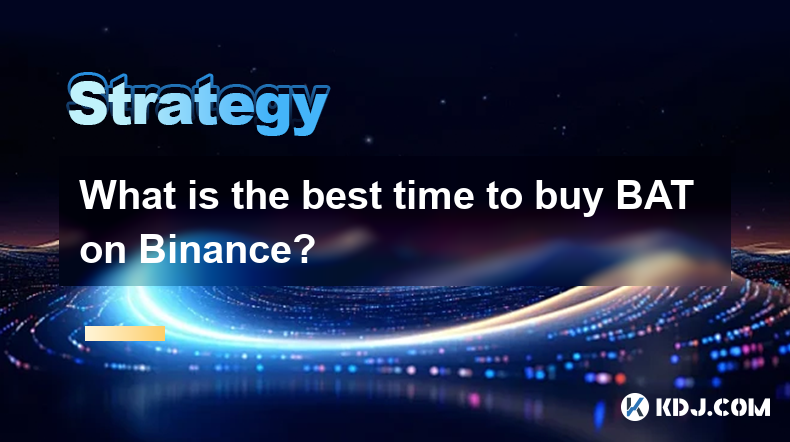
What is the best time to buy BAT on Binance?
Apr 01,2025 at 02:07am
There's no single 'best' time to buy Basic Attention Token (BAT) on Binance, or any cryptocurrency for that matter. The cryptocurrency market is incredibly volatile, influenced by a multitude of factors, making precise prediction impossible. Timing the market perfectly is a fool's errand. Instead, focus on a long-term strategy and consider your persona...
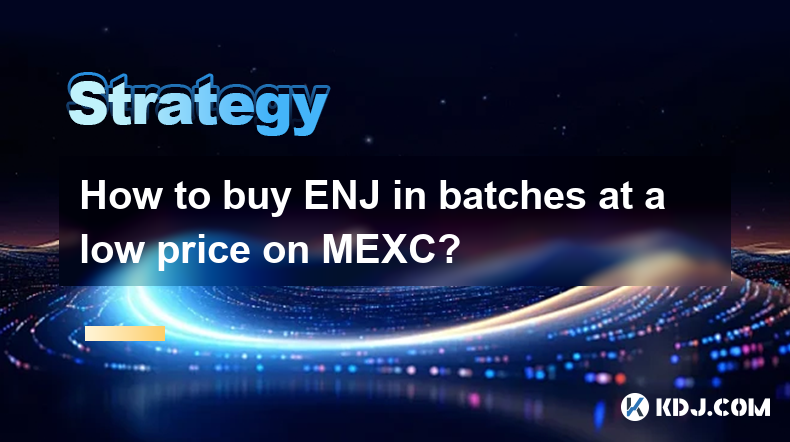
How to buy ENJ in batches at a low price on MEXC?
Mar 30,2025 at 10:28am
Understanding Batch Buying and Price FluctuationsBuying ENJ (Enjin Coin) in batches on MEXC, or any exchange, aims to mitigate the risk of buying high. Cryptocurrency prices are incredibly volatile. Purchasing a large amount at once exposes you to significant losses if the price drops immediately after your purchase. Batch buying spreads out your inves...
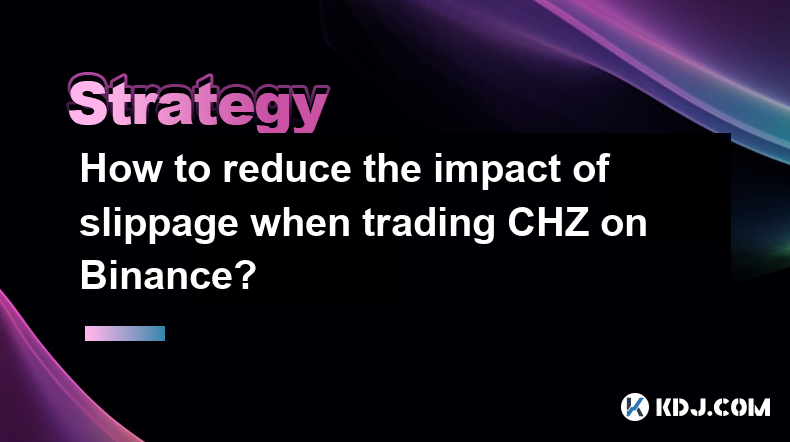
How to reduce the impact of slippage when trading CHZ on Binance?
Apr 01,2025 at 08:00pm
Understanding Slippage in CHZ TradingSlippage refers to the difference between the expected price of a trade and the actual execution price. In the volatile cryptocurrency market, especially with tokens like CHZ (Chiliz), slippage can significantly impact your profits. Several factors contribute to slippage, and understanding them is crucial to mitigat...

How to seize the opportunity to catch up with the rise of DOT on Bitget?
Mar 31,2025 at 07:29pm
Understanding the DOT/Bitget OpportunityPolkaDot (DOT) is a prominent cryptocurrency known for its innovative cross-chain interoperability solutions. Bitget is a well-established cryptocurrency exchange offering a variety of trading options, including DOT trading pairs. Seizing opportunities within this pairing requires understanding market dynamics, r...

How to optimize the buying and selling points when trading ALGO on Binance?
Mar 31,2025 at 12:28am
Understanding ALGO Price Volatility on BinanceAlgorand (ALGO) price, like most cryptocurrencies, is highly volatile. Successful trading requires understanding these fluctuations and identifying optimal entry and exit points. This involves analyzing market trends, using technical indicators, and managing risk effectively. Ignoring these factors can lead...

How to ambush SAND at a low price on KuCoin?
Apr 02,2025 at 06:22am
Understanding the SAND Price VolatilityThe Sandbox (SAND) token, like most cryptocurrencies, experiences price fluctuations. These fluctuations are influenced by various factors, including market sentiment, technological developments within the Sandbox metaverse, broader cryptocurrency market trends, and news impacting the overall blockchain space. Suc...

What is the best time to buy BAT on Binance?
Apr 01,2025 at 02:07am
There's no single 'best' time to buy Basic Attention Token (BAT) on Binance, or any cryptocurrency for that matter. The cryptocurrency market is incredibly volatile, influenced by a multitude of factors, making precise prediction impossible. Timing the market perfectly is a fool's errand. Instead, focus on a long-term strategy and consider your persona...

How to buy ENJ in batches at a low price on MEXC?
Mar 30,2025 at 10:28am
Understanding Batch Buying and Price FluctuationsBuying ENJ (Enjin Coin) in batches on MEXC, or any exchange, aims to mitigate the risk of buying high. Cryptocurrency prices are incredibly volatile. Purchasing a large amount at once exposes you to significant losses if the price drops immediately after your purchase. Batch buying spreads out your inves...

How to reduce the impact of slippage when trading CHZ on Binance?
Apr 01,2025 at 08:00pm
Understanding Slippage in CHZ TradingSlippage refers to the difference between the expected price of a trade and the actual execution price. In the volatile cryptocurrency market, especially with tokens like CHZ (Chiliz), slippage can significantly impact your profits. Several factors contribute to slippage, and understanding them is crucial to mitigat...
See all articles

























































































